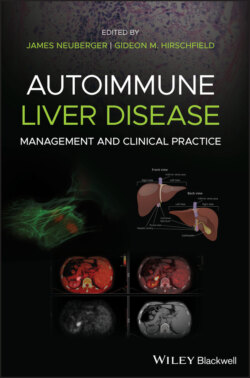Читать книгу Autoimmune Liver Disease - Группа авторов - Страница 71
Neoantigens
ОглавлениеNeoantigens, also called cryptic antigens, can elicit autoimmune responses against autoantigenic epitopes that are not immunogenic until modified by either somatic hypermutations or binding of haptens [22]. Haptens are small molecules, most often metabolites of drugs or environmental xenobiotics, that are incapable of eliciting an immune response unless bound to host carrier proteins. Hapten–carrier protein complexes elicit immune responses against a single hapten epitope and multiple autoepitopes of the carrier protein. For example, haptens generate autoimmunity against cytochrome P450 (CYP)2D6 in type 2 AIH and autoantibodies and a minority of patients with chronic HCV infection, whereas haptens bound to UDP‐glucuronosyltransferase (UGT) in those infected with HCV or hepatitis D virus, and with Addison disease, APS‐1 syndrome and some drug‐induced liver injuries result in anti‐UGT reactions. A subset of NK cells develop antigen‐specific memory to haptens, which may be important for immune responses after hapten reexposure. Oral supplements of lipoic acid act as a haptens in the immunogenicity of the lipoic acid‐binding site of PDC‐E2, the principal autoantigen in PBC. Biochemical modifications of self‐antigens can also increase the immunogenicity of autoantigens. The best example is citrullination, produced by posttranslational conversion of arginine to citrulline. Since DNA does not encode the amino acid citrulline, citrullinated self‐proteins become autoantigenic, as in RA.
